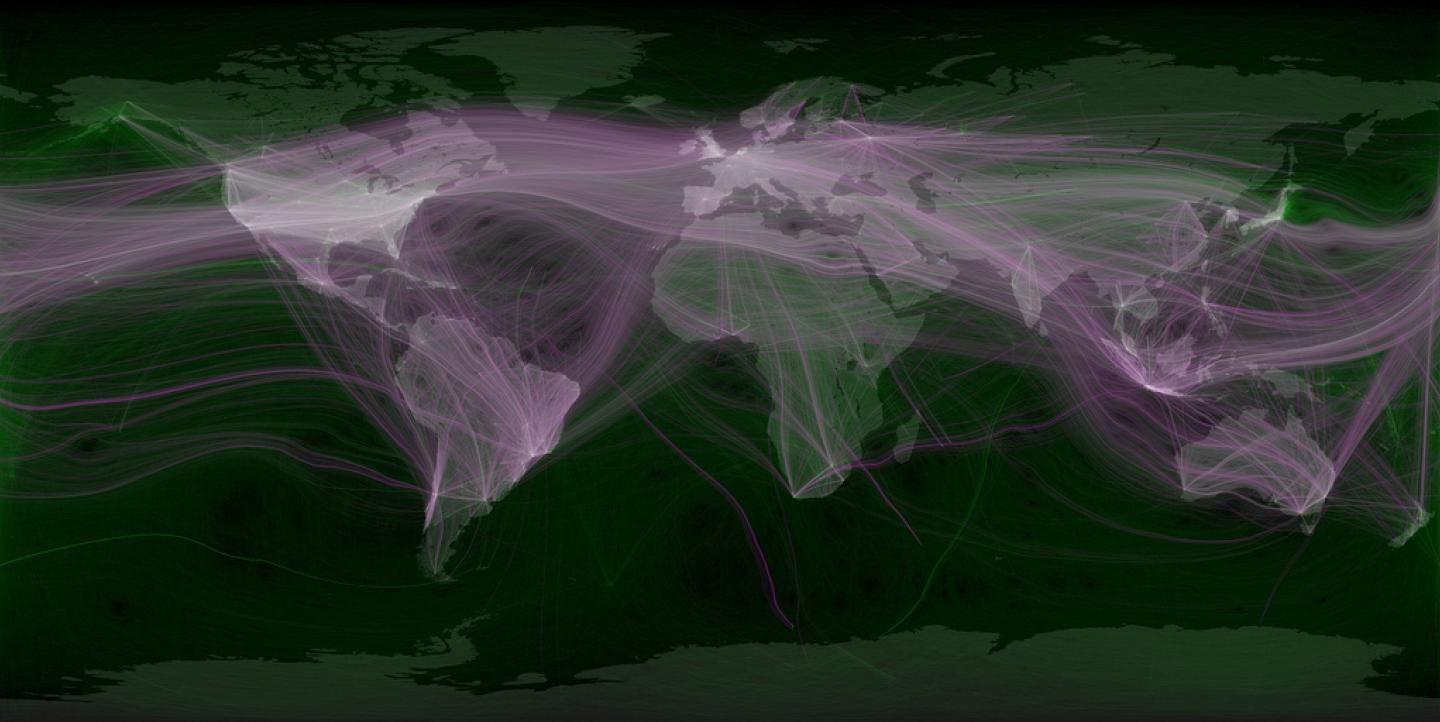A recent story circulating on the internet noted that when it comes to data journalism in the Middle East, one name stands out: Amr Eleraqi.
The high-tech guru from Cairo was the driving force behind the launch of Arab Data Journalists’ Network, or ADJN, as it commonly is known. The online resource was created in part, he says, “to help fill a void.”
“Data journalism is the current revolution in the media world, but there were few educational materials or examples of data-driven stories in Arabic,” said Eleraqi. “We wanted to create our own content instead of relying exclusively on translated materials.”
He compares data journalism to a train: “If you just stand by and watch, you will be left behind. You have to get on board.” Since its inception in July 2017, ADJN has become a hub for data journalists in the region.
The website — in Arabic, English and French — features training materials, resources, tools and techniques for data-generated storytelling. There are postings of local and international news, articles and advice from experts in the field.
To Eleraqi, adapting to the latest digital technology comes as naturally as breathing.
In 2012, he co-founded InfoTimes, a website specializing in data journalism, and won top honors from the International Center for Journalists for using digital technology in public service reporting during a program in Amman, Jordan. The following year, he won an Egyptian Media Syndicate award for innovation.
In 2016, he published “Data Journalism Fundamentals,” the first book on the topic in Arabic. In a profile, Eleraqi describes himself as “the guy who analyzes the data, finds the juicy stories and explains it to the designers.”
To learn more about the practice of data journalism in the Middle East and North Africa, ADJN posted a survey on Facebook. Sixty journalists from seven countries — Egypt, Morocco, Jordan Tunisia, Iraq, Syria and Lebanon — responded. Of those, 44 percent were female and 56 percent male. The majority were from Egypt.
Among the findings:
-
Ninety-four percent of the journalists said it was “very hard or hard” to obtain official data in their countries. The response “very easy” did not receive a single vote.
-
FOI laws didn’t appear to be helpful even in countries such as Jordan and Tunisia where they exist. The majority of respondents never used a freedom of information request.
-
Half of the participants were experienced in using free tools to visualize data in their stories. Piktochart, Infogram, and Google Sheets were most often mentioned.
-
Nearly 70 percent said they published mainly online; 18.6 percent worked for print publications, and 12 percent for radio. No one responded that they worked for TV.
The end of the survey included a list of recommendations that the editorial team compiled from data journalism experts and websites such as Poynter and Ojo Público. Among the most noteworthy tips and advice:
-
“Data on its own doesn’t tell a story. We still need journalists to decide how to arrange, analyze and visualize data, as well as provide appropriate context and interpretation.”
-
“Great data projects don’t often begin with great data sets. They begin with great questions and the desire to find the hardest evidence available to answer those questions.”
-
“Data journalism is most often about humans. Get rid of the numbers and find the humans who are the best examples of your data.”
-
“There are nearly always errors in data. You have the responsibility to get rid of the errors before presenting information to the audience.”
-
“If you don’t know spreadsheets, learn. Search for help and tips online. Give yourself plenty of time when first getting started. Don’t do it on deadline. You will make mistakes.”
-
“Government agencies are slowly adapting to providing data in excel format. Always try to obtain information in a readable form, if not, you may have to resort entering data manually.”
The survey noted that “there is a great history of sharing among the data journalism community. This is the only way to keep up ever-changing tools and methods.” ADJN was designed to fulfill that role.
Journalists from the region will gather March 6 to 8 in Cairo for the conference In-Depth Data Journalism, organized by ADJN. Among the topics: data collecting, cleaning and verification, coding for journalists, the power of interactive storytelling and statistics for journalists. A limited number of paid fellowships are available for journalists who cannot afford to travel to the event.
Videos on data journalism created by Eleraqi are posted on the ADJN website, including “Four Skills Required of Data Journalists” and “Simple Rules to Avoid Common Mistakes in Data Design.”
Main image CC-licensed by Flickr via Eric Fischer.


